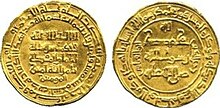The 1090s was a decade of the Julian Calendar which began on January 1, 1090, and ended on December 31, 1099.

Year 1098 (MXCVIII) was a common year starting on Friday of the Julian calendar.
The 1070s was a decade of the Julian Calendar which began on January 1, 1070, and ended on December 31, 1079.
The 1100s was a decade of the Julian Calendar which began on January 1, 1100, and ended on December 31, 1109.

Year 1095 (MXCV) was a common year starting on Monday of the Julian calendar.
The 1110s was a decade of the Julian Calendar which began on January 1, 1110, and ended on December 31, 1119.
The 1080s was a decade of the Julian Calendar which began on January 1, 1080, and ended on December 31, 1089.
Year 1118 (MCXVIII) was a common year starting on Tuesday of the Julian calendar.

Year 1097 (MXCVII) was a common year starting on Thursday of the Julian calendar.

Year 1029 (MXXIX) was a common year starting on Wednesday of the Julian calendar.

Year 1074 (MLXXIV) was a common year starting on Wednesday of the Julian calendar.

Year 1092 (MXCII) was a leap year starting on Thursday of the Julian calendar.

Year 1105 (MCV) was a common year starting on Sunday of the Julian calendar.
Musta'li Isma'ilism is a branch of Isma'ilism named for their acceptance of al-Musta'li as the legitimate ninth Fatimid caliph and legitimate successor to his father, al-Mustansir Billah. In contrast, the Nizari—the other living branch of Ismailism, presently led by Aga Khan IV—believe the ninth caliph was al-Musta'li's elder brother, Nizar.

Abū Tamīm Maʿad al-Mustanṣir biʾllāh was the eighth Fatimid Caliph from 1036 until 1094. He was one of the longest reigning Muslim rulers. His reign was the twilight of the Fatimid state. The start of his reign saw the continuation of competent administrators running the Fatimid state, overseeing the state's prosperity in the first two decades of al-Mustansir's reign. However, the break out of court infighting between the Turkish and Berber/Sudanese court factions following al-Yazuri's assassination, coinciding with natural disasters in Egypt and the gradual loss of administrative control over Fatimid possessions outside of Egypt, almost resulted in the total collapse of the Fatimid state in the 1060s, before the appointment of the Armenian general Badr al-Jamali, who assumed power as vizier in 1073, and became the de facto dictator of the country under the nominal rule of al-Mustansir.

Abū al-Qāsim Aḥmad ibn al-Mustanṣir, better known by his regnal name al-Mustaʿlī biʾllāh, was the ninth Fatimid caliph and the 19th imam of Musta'li Ismailism.

Nasir al-Din Mahmud I (1088–1094) was an infant sultan of the Seljuk Empire from 1092 to 1094, with most power held by his mother Terken Khatun. He was a younger son of the former sultan Malik Shah I and proclaimed sultan at Baghdad by the caliph al-Muqtadi. Under his notional reign, the empire built by his father and Alp Arslan fragmented. After Mahmud's forces lost a battle at Borujerd, he and his mother were assassinated by the family of the former vizir Nizam al-Mulk.
The 1020s was a decade of the Julian Calendar which began on January 1, 1020, and ended on December 31, 1029.
By the late 11th century, the Shi'a sub-sect of Ismailism had found many adherents in Persia, although the region was occupied by the Sunni Seljuk Empire. The hostile tendencies of the Abbasid–Seljuk order triggered a revolt by Ismailis in Persia under Hassan-i Sabbah, starting the so-called Alamut Period.











